As temperatures rise in the Arizona summer, McKay Lodge Conservation Laboratory conservators traveled to perform some surreal ceramic conservation in the Southwest of the United States. The sculptures were previously assessed and treated by Jim Gwinner, Conservator of Public Art and Sculpture, but they require regular maintenance. This time Stefan Dedecek, Conservator of Paintings, Murals, and Polychrome Surfaces joined him to conduct treatments of three ceramic artworks.
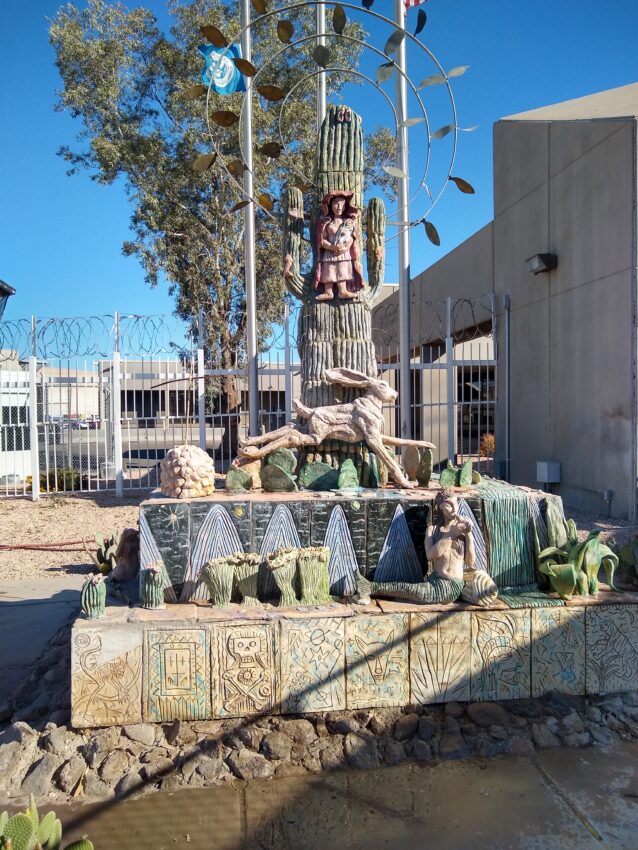
The three artworks: Maria Alquilar, Bienvenida y Vaya Con Dias, 1998; Susan Furini, Sasabe, 1998; Susan T. Gamble, The Naco Borderland, 1997. They range from San Luis to Sasabe to Naco, Arizona, and all composed of vibrantly colored ceramic elements or tiles which pay homage to the region. All three works, in part due to the harsh desert environment, suffer significant physical deterioration and require regular conservation intervention.
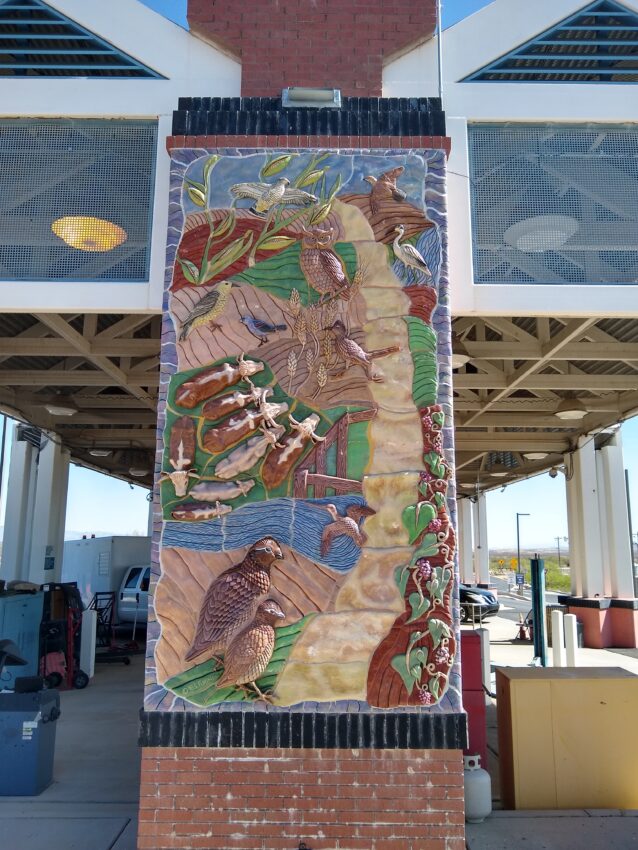
Bienvenida y Vaya Con Dias is a dynamic tiered design featuring several dozen tiles and three-dimensional figures, plants, and animals in a fantasy setting. Sasabe consists of several tiles that are attached to a column. The piece by Furini also features local flora and fauna, and while the forms are abstract and rendered from several perspectives, they are more realistic than the mystical sculpture by Alquilar.
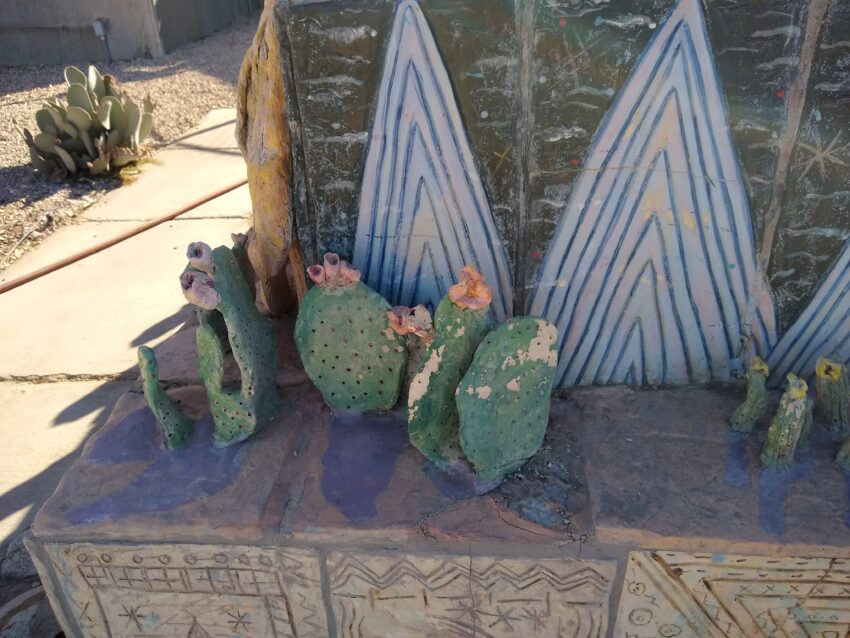
Both artworks, beyond the normal surface soiling expected for outdoor works of art, have a condition issue known as shivering. In this case, it is a defect that occurs in glazed ceramics where the glaze peels or chips from the clay body because the glaze is compressed by the clay body. The defect might be immediately apparent after firing or surface years later.
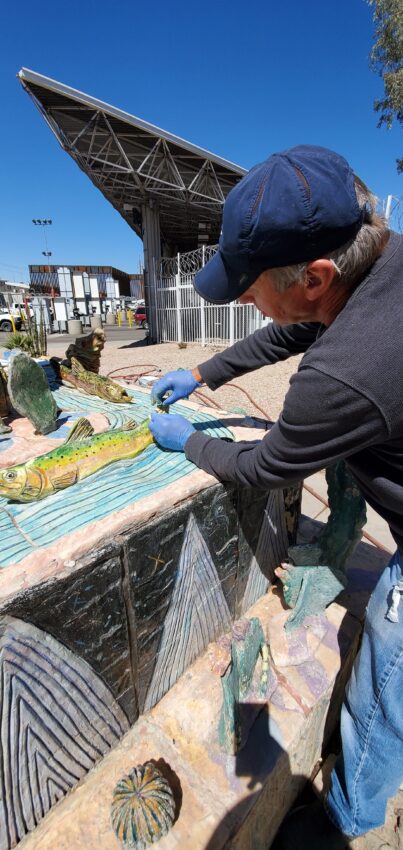
Shivering is unfortunately an inherent vice, this means that there is nothing that can be done to reverse the process, but it can be treated to help prolong the life of the artwork. A full conservation of the ceramic artworks in the Southwest were therefore necessary to mitigate this condition issue discussed later.
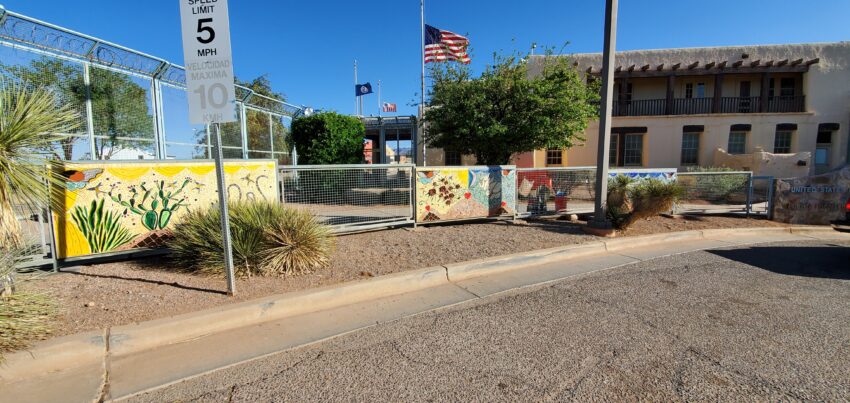
The Naco Borderland like the other two artworks feature local flora and fauna. It also showcases local history, 1898 voter registration, and logs of the 1900, 1910, and 1920 federal census. The artwork is much different in appearance than the other two surreal ceramic artworks.
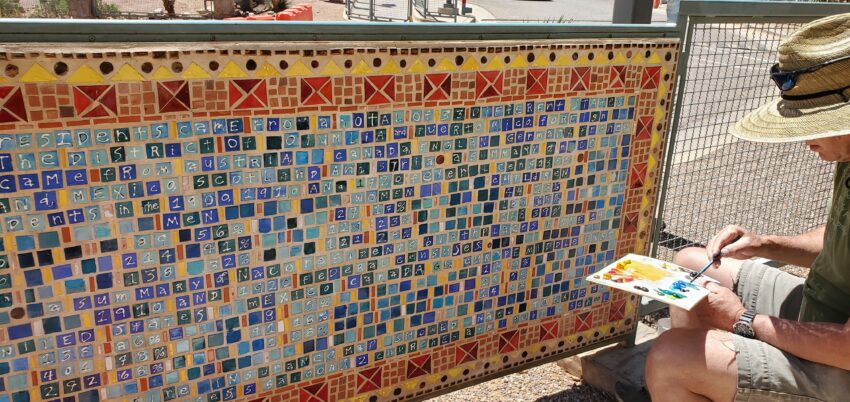
It features a series of six mosaic panels installed along a fence that delineates pedestrian traffic from vehicular traffic. The three that face the pedestrian pathway have differing color schemes; the one located nearest the border station is predominantly blue, the middle one is predominantly red, and the last one is predominantly yellow. The other three panels feature local plants and animals.
Despite the complexity of the artworks themselves, conservation treatment of the ceramic artworks in the Southwest was straightforward, but time consuming.
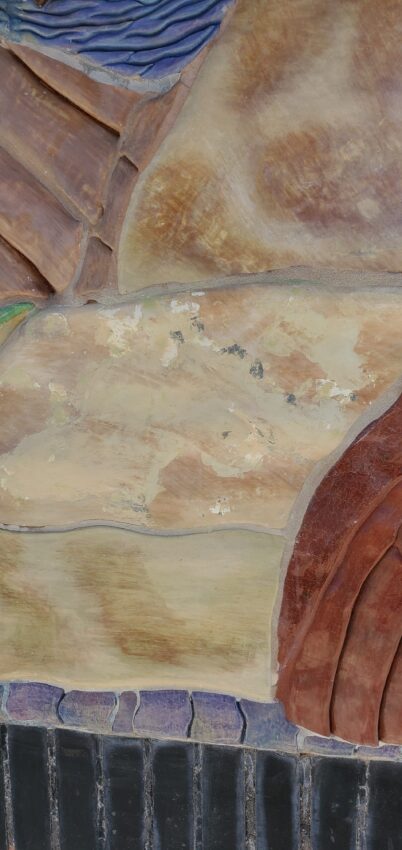
Conservators Gwinner and Dedecek devised a method of filling the areas of loss with a two-component epoxy which was molded then sanded to shape. Losses were filled then inpainted with acrylic paints to match the surrounding designs. A varnish with a ultra-violet inhibitor made to withstand outdoor exposure was also applied to treated areas, protecting them from the intense sun.
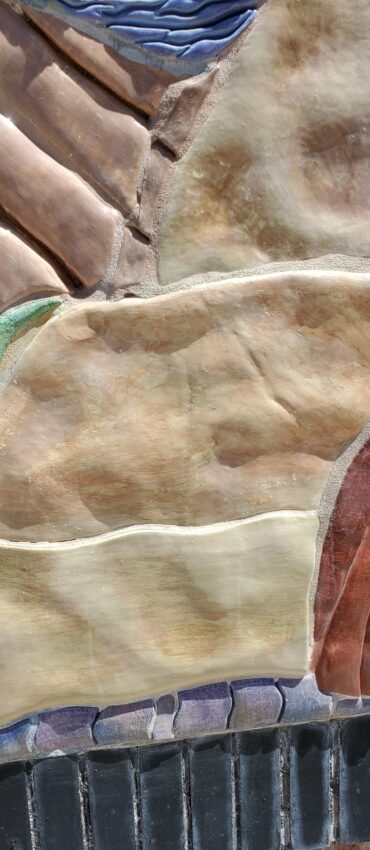
After conservation treatment, all three ceramic artworks are more stable and their appearance greatly improved. They will still need care and maintenance on a regular basis in the future.
